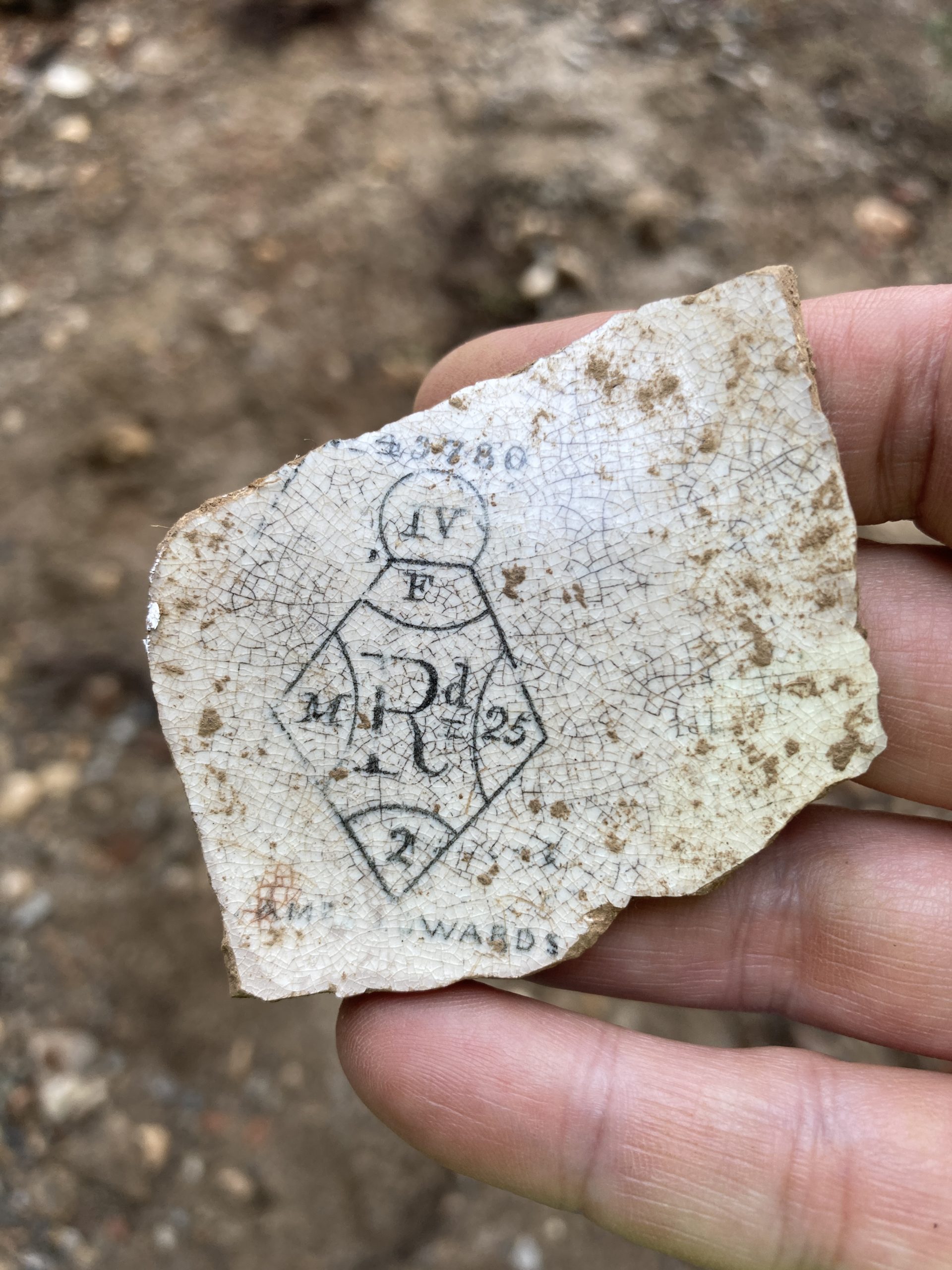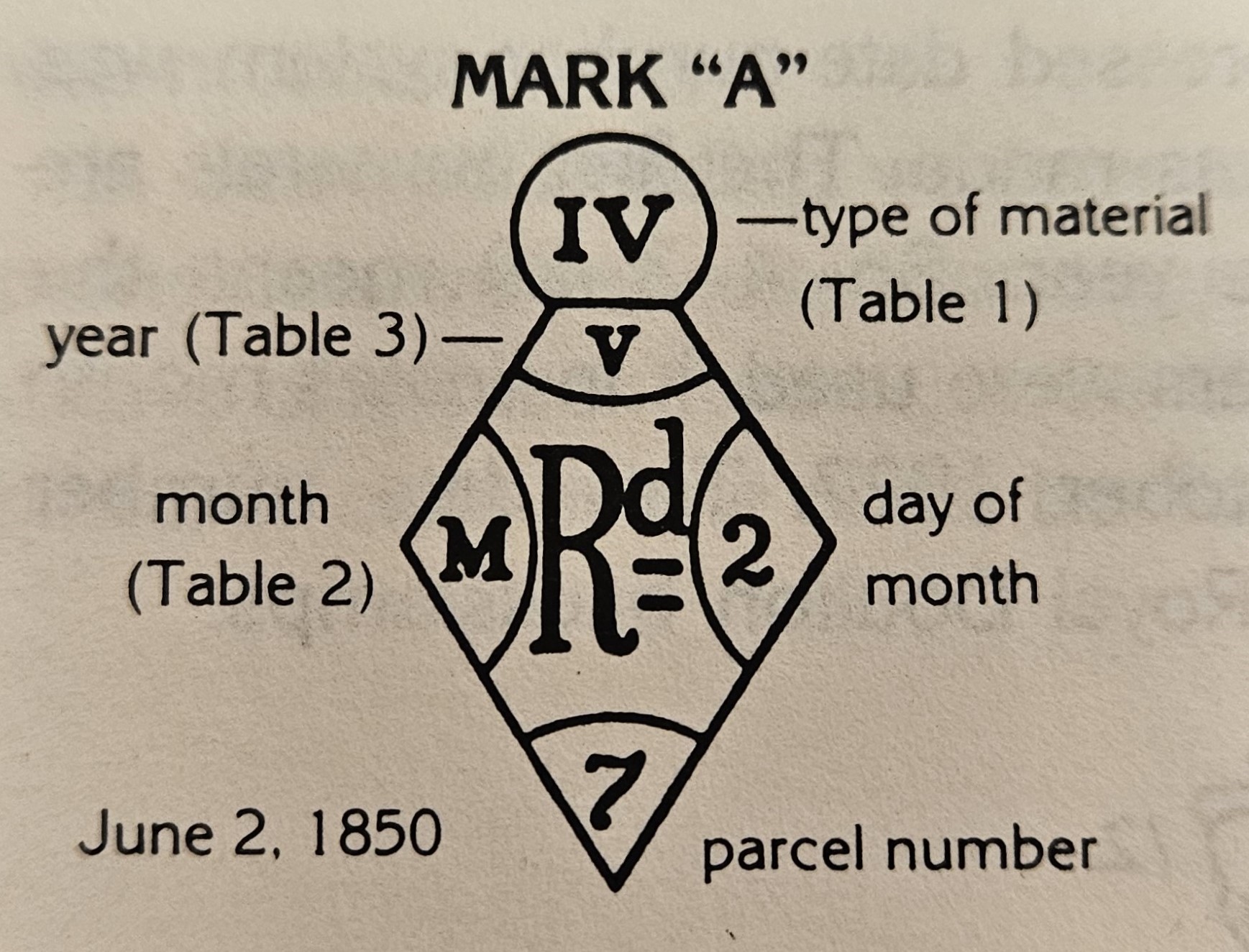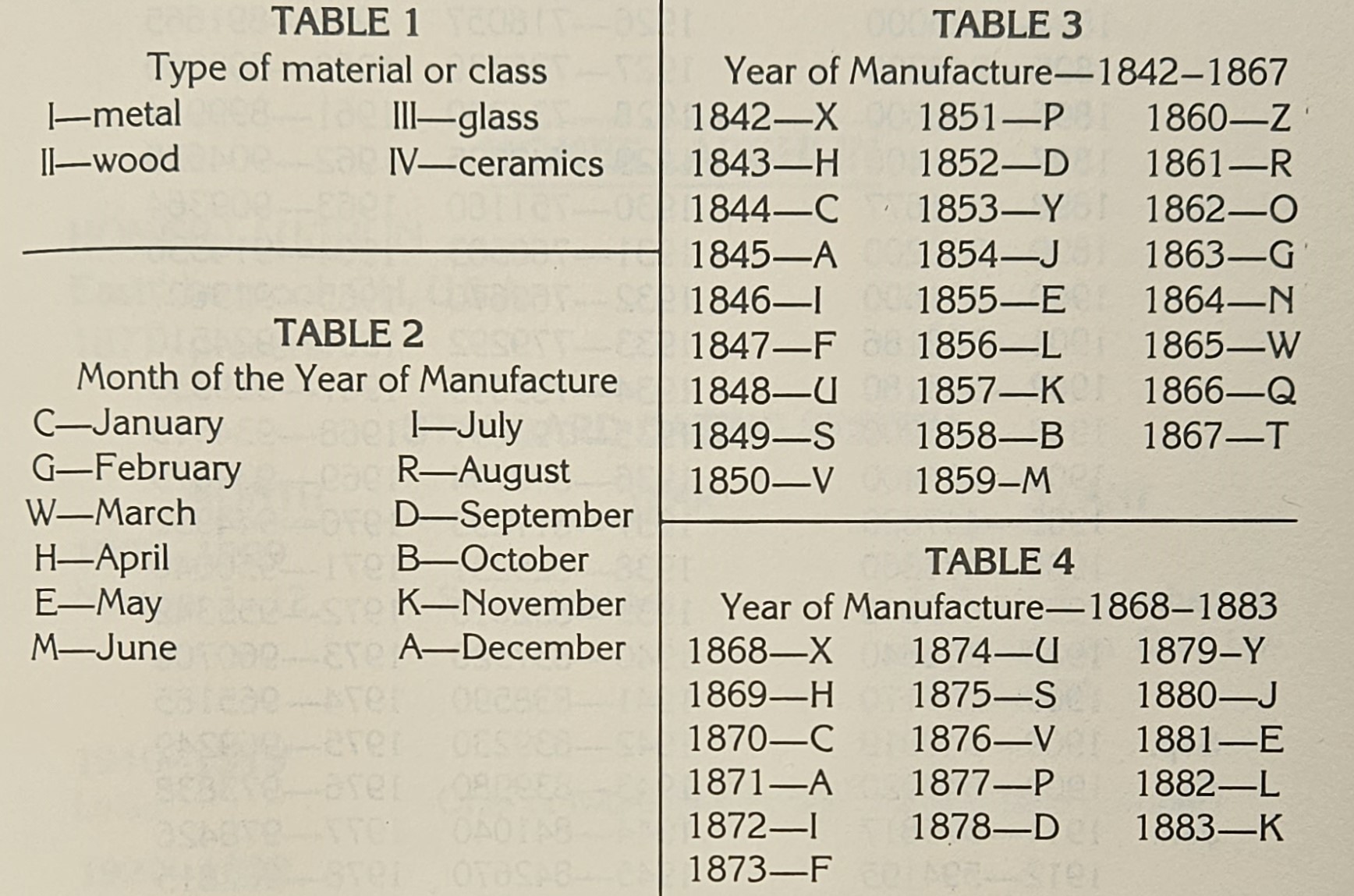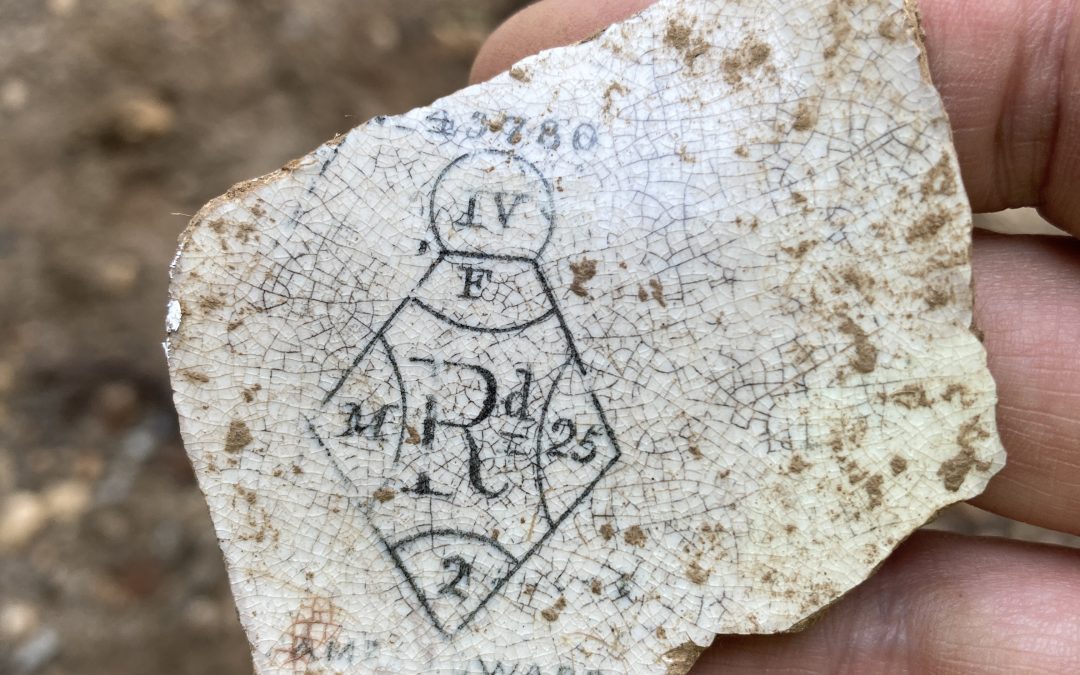By K. Lee Priddy
“When does a specific artifact date from and how do you know?” is one of the most frequent questions that I receive when talking to the public. It allows me to discuss manufacturing dates of ceramics, bottles, and metals and the methods that we use to date projectile points and precontact ceramics. I often get asked about the presence of coins on archaeological sites and their usefulness in dating. While dated coins are helpful, their presence and frequency are relatively rare, so we incorporate many artifact types into dating archaeological sites. Below is one example where a ceramic sherd was far more helpful than a coin!
During an archaeological excavation of a side yard in Fredericksburg, Virginia, an ironstone sherd, dating from 1840–present, was recovered with a distinct maker’s mark. Since 1842, English decorative art designs, including those found on ceramics, had to be registered at the British patent office. Many of the ceramics pieces were marked as a result and can be very helpful in dating English pottery.

This ironstone base sherd exhibited a transfer-printed, diamond-shaped Registry Mark A symbol that was used between 1842 and 1867. Within this mark, letters and numbers represented types of material, month, day, year, and parcel number. Using the below Registry Mark “A” Template and the Table of Manufacturing Information, we can determine that the “IV” represents a ceramic piece, the “F” stands for 1847, the “M” for June, and “25” for the twenty-fifth day of the month. As seen in the comparative images, this sherd was manufactured on June 25, 1847. The partial “WARDS” beneath the diamond might indicate the manufacturing company.



Knowing that this artifact was manufactured on an exact day means that the deposit where it was found has to date after June 25, 1847. Archaeologists refer to this date as a terminus post quem, a Latin phrase is interpreted as “date after which.” Archaeologists know that an archaeological deposit cannot date earlier than the latest-produced artifacts, which in this case, was the ironstone sherd. A coin manufactured on June 25, 1847 would only have a year stamped, while this ceramic gave archaeologists a much more specific date!
References
Kovels
Kovel, Ralph and Terry Kovel
1986 Kovel’s New Dictionary of Marks. Crown Publishers, Inc. New York, New York.

